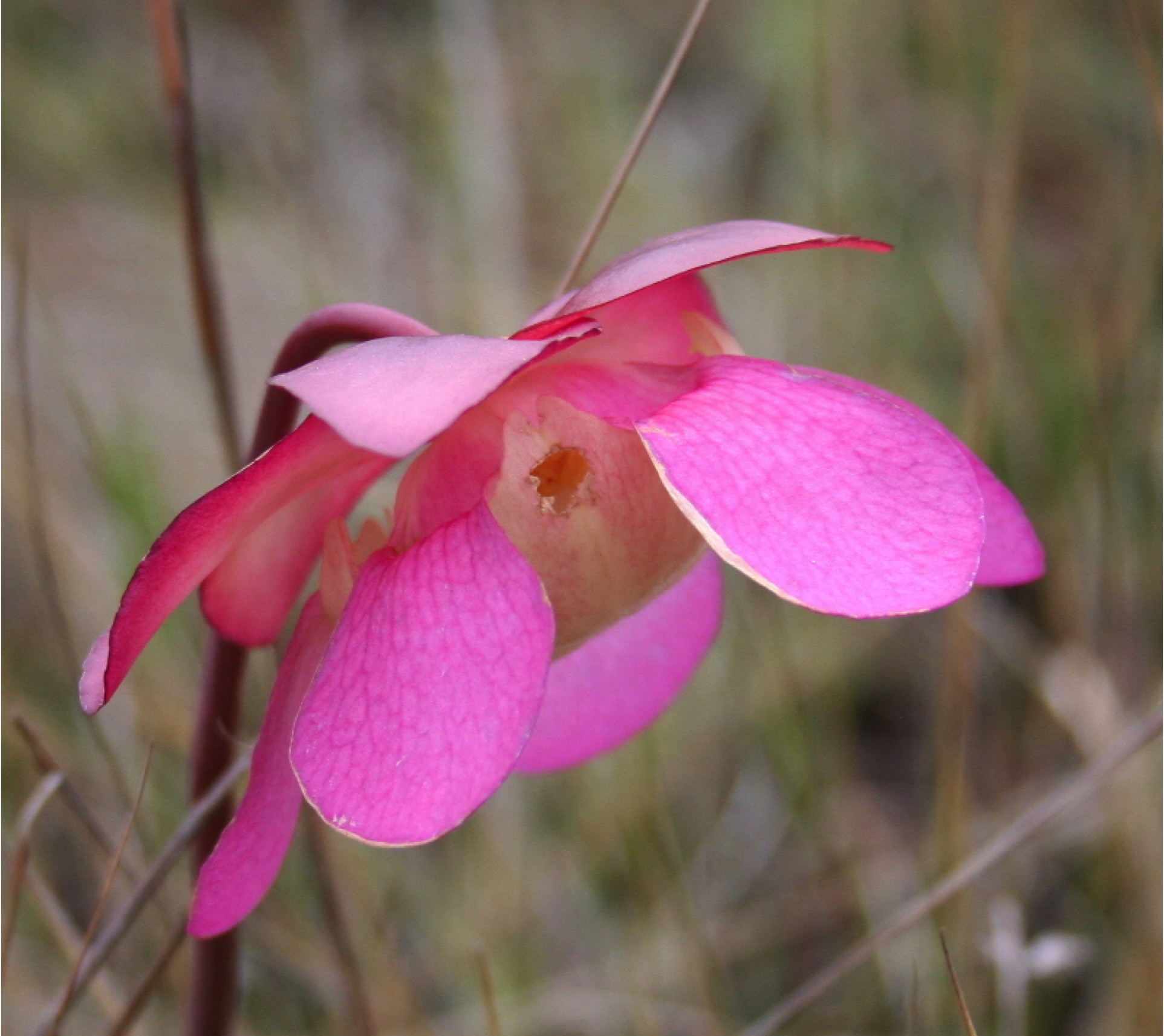Sarracenia rosea
Common names: Purple pitcherplant, Rose pitcherplant, Decumbent pitcherplant, Pink pitcherplant
| Sarracenia rosea | |
|---|---|

| |
| Photo by T. Miller | |
| Scientific classification | |
| Kingdom: | Plantae |
| Division: | Magnoliophyta - Flowering plants |
| Class: | Dicotyledons |
| Order: | Nepenthales |
| Family: | Sarraceniaceae |
| Genus: | Sarracenia |
| Species: | S. rosea |
| Binomial name | |
| Sarracenia rosea Naczi, Case & R.B. Case | |

| |
| Natural range of Sarracenia rosea from USDA NRCS Plants Database. | |
Contents
Taxonomic notes
Synonyms: Sarracenia purpurea
Subspecies: S. purpurea Linnaeus ssp. purpurea var. burkii Schnell; S. purpurea ssp. venosa (Rafinesque) Fernald var. burkii Schnell
Varieties: S. purpurea var. purpurea Reveal (1993)
Description
Distribution
The parent species, Sarracenia purpurea, occurs from the Northwest Territories in Canada, all the way down to southern Georgia, and from the eastern Rockies in Canada out to the maritime provinces. This species was originally divided into two subspecies, S. purpurea purpurea, and S. purpurea venosa. However, more recently, the southern group has been split further, with the southernmost populations in Florida, Mississippi and Alabama now classified as S. rosea. There is a disjunction between S. purpurea and S. rosea, as there are very few populations of either species in Georgia.
Sarracenia rosea is restricted to burned savannas and ecotones between river and forest in most areas where it occurs. It also can occur along power lines that are regularly mowed.
Ecology
Phenology
It flowers from March to July with peak inflorescence in April.[1]
Pollination
The common lore has been that S. purpurea (and by implication S. rosea) is pollinated by bumblebees. The sepals, petals, and the umbrella-shaped style form an inner chamber where the anthers occur. It does appear that pollination will require sufficient effort to push between sepals on the way into the flower and push out between petals on the way out. The flower appears to also promote outcrossing and reduce autogamy because the five stigma surfaces are at the tips of the umbrella where bees are thought to enter the flower. However, I don't know of any published studies confirming this.
Students in the Miller lab at FSU have tried to watch flowers and even film flowers to observe pollinators. Despite a reasonable effort, we have not seen a single pollinator in the field. One study of Sarracenia purpurea did observe two bees and one fly removing pollen in Massachusetts. But, clearly more work is needed in this area. Information from hobbyists suggests that S. purpurea will self, but that there can be inbreeding problems and low seed set. Hand pollinations give high seed yields.
Conservation, cultivation, and restoration
Cultural use
Photo Gallery
References and notes
This species was originally considered to be Sarracenia purpurea var. venosa. Rob Naczi proposed that S. rosea be a separate species, based on a lighter flower color, a shorter flowering scape, and a thicker lip on the leaf.
Naczi, R.F.C., Soper, E.M., Case, F.W. & Case, R.B. (1999) Sarracenia rosea (Sarraceniaceae), a new species of pitcher plant from the southeastern United States. Sida, 18, 1183–1206.